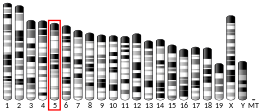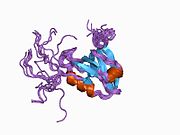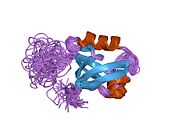
Tyrosine-protein phosphatase non-receptor type 11 (PTPN11) also known as protein-tyrosine phosphatase 1D (PTP-1D), Src homology region 2 domain-containing phosphatase-2 (SHP-2), or protein-tyrosine phosphatase 2C (PTP-2C) is an enzyme that in humans is encoded by the PTPN11 gene. PTPN11 is a protein tyrosine phosphatase (PTP) Shp2.

JAK1 is a human tyrosine kinase protein essential for signaling for certain type I and type II cytokines. It interacts with the common gamma chain (γc) of type I cytokine receptors, to elicit signals from the IL-2 receptor family, the IL-4 receptor family, the gp130 receptor family. It is also important for transducing a signal by type I (IFN-α/β) and type II (IFN-γ) interferons, and members of the IL-10 family via type II cytokine receptors. Jak1 plays a critical role in initiating responses to multiple major cytokine receptor families. Loss of Jak1 is lethal in neonatal mice, possibly due to difficulties suckling. Expression of JAK1 in cancer cells enables individual cells to contract, potentially allowing them to escape their tumor and metastasize to other parts of the body.

Mitogen-activated protein kinase 1, also known as ERK2, is an enzyme that in humans is encoded by the MAPK1 gene.
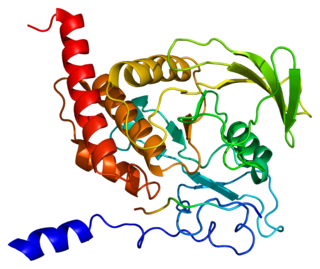
Tyrosine-protein phosphatase non-receptor type 6, also known as Src homology region 2 domain-containing phosphatase-1 (SHP-1), is an enzyme that in humans is encoded by the PTPN6 gene.
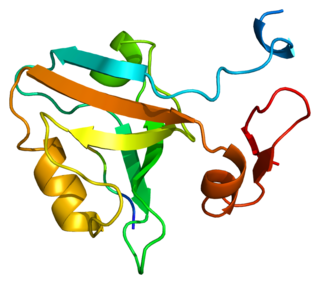
PSD-95 also known as SAP-90 is a protein that in humans is encoded by the DLG4 gene.
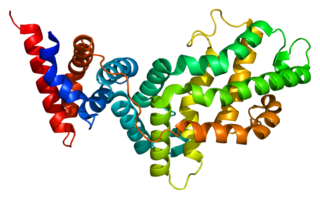
RAS p21 protein activator 1 or RasGAP, also known as RASA1, is a 120-kDa cytosolic human protein that provides two principal activities:

Protein tyrosine kinase 2 beta is an enzyme that in humans is encoded by the PTK2B gene.

Tyrosine-protein phosphatase non-receptor type 12 is an enzyme that in humans is encoded by the PTPN12 gene.

Receptor-type tyrosine-protein phosphatase alpha is an enzyme that in humans is encoded by the PTPRA gene.

Receptor-type tyrosine-protein phosphatase F is an enzyme that, in humans, is encoded by the PTPRF gene.
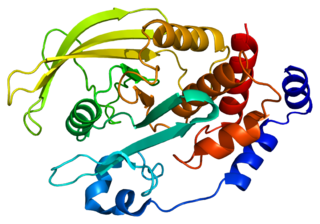
Tyrosine-protein phosphatase non-receptor type 2 is an enzyme that in humans is encoded by the PTPN2 gene.

Proto-oncogene tyrosine-protein kinase FER is an enzyme that in humans is encoded by the FER gene.

Receptor-type tyrosine-protein phosphatase eta is an enzyme that in humans is encoded by the PTPRJ gene.

Serine/threonine-protein kinase N2 is an enzyme that in humans and Strongylocentrotus purpuratus is encoded by the PKN2 gene.

Receptor-type tyrosine-protein phosphatase mu is an enzyme that in humans is encoded by the PTPRM gene.
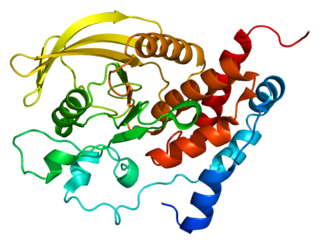
Protein tyrosine phosphatase receptor-type R is an enzyme that in humans is encoded by the PTPRR gene.

Multiple PDZ domain protein is a protein that in humans is encoded by the MPDZ gene.

Proline-serine-threonine phosphatase-interacting protein 1 is an enzyme that in humans is encoded by the PSTPIP1 gene.

Tyrosine-protein phosphatase non-receptor type 3 is an enzyme that in humans is encoded by the PTPN3 gene.

Tyrosine-protein phosphatase non-receptor type 21 is an enzyme that in humans is encoded by the PTPN21 gene.



